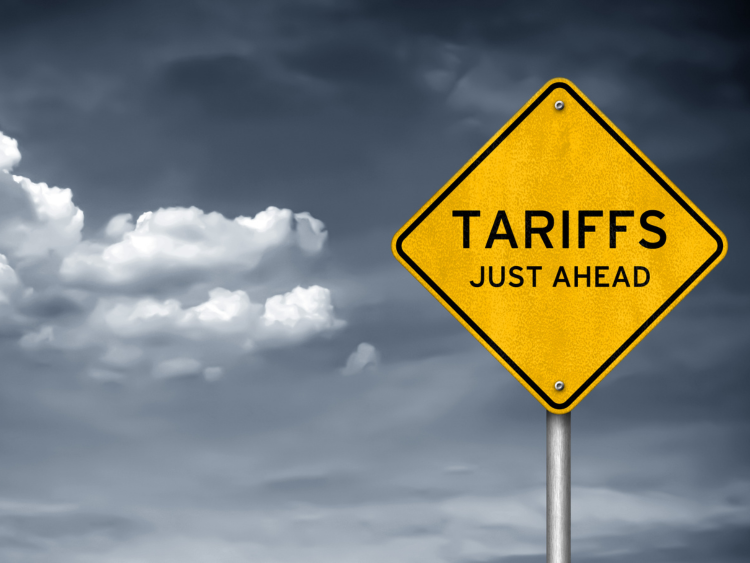Trade Cases

Trans-Pacific Partnership Agreement Reached
Written by Sandy Williams
October 5, 2015
The 12 countries of the Trans-Pacific Partnership have finally reached accord on an agreement after more than five years of intensive negotiations, effectively creating the world’s largest free trade zone.
US Trade Representative Michael Froman said in an announcement that the agreement will “support jobs, drive sustainable growth, foster inclusive development and promote innovation across the Asia-Pacific region.”
The partnership is comprised of the United States, Canada, Mexico, Peru, Chile, New Zealand, Australia, Singapore, Malaysia, Brunei, Vietnam and Japan. Together the countries make up over 40 percent of the worlds’ economy.
The agreement is intended to reduce barriers to international trade including the phase out of numerous import tariffs. The agreement also establishes uniform rules on corporate intellectual property, widens internet reach and addresses wildlife trafficking and environmental abuse.
“This partnership levels the playing field for our farmers, ranchers and manufacturers by eliminating more than 18,000 taxes that various countries put on our products, said President Obama in a statement. “ It includes the strongest commitments on labor and the environment of any trade agreement in history, and those commitments are enforceable, unlike in past agreements.”
Some critics fear the trade deal will move more US jobs overseas as businesses take advantage of lower wages in developing economies. Proponents see the TPP as an opportunity to increase exports which will produce well-paid jobs in the U.S.
China is, significantly, not included in the pact and there is hope that the agreement will help to level the playing field and counter some of China’s influence in the region.
During the next few weeks, a complete text of the TPP will be prepared for public release. The Trade Promotion Authority (TPA) or “fast track” authority signed into law earlier this year will come into play as the President seeks passage of the TPP in Congress. The agreement will be presented to Congress for discussion and a straight up-or-down vote, without amendments. According to the TPA legislation, the President must give Congress 90 days’ notice that he intends to sign the agreement. A public posting of the text must occur 60 days before the signature.
Trade Talk, published by Squire Patton Boggs, said the timing of the vote in Congress is unclear. “The Administration may wish to see the bill move through Capitol Hill as soon as possible, to clinch a major tenant of President Obama’s economic and foreign policy legacies. However, trade deals face a difficult road during election years, and there is only a short window between the busiest time in the primary schedule and the presidential nominating conventions in July. While some would argue the President should wait until the lame duck session, leaving the TPP in limbo until next November could provide its opponents too much time to undermine support. Ultimately, stakeholders may seek to influence the final deal through additional side agreements and through TPP’s implementing legislation in the United States, leaving opportunities for interested parties to still make an impact.”
AISI
The American Iron and Steel Institute expressed concern about “rules of origin for autos and auto parts, currency manipulation, and disciplines on state-owned enterprises.” AISI President and CEO Thomas J. Gibson issued the following statement:
“The steel associations from the NAFTA countries have been very vocal in expressing their view that the TPP must require regional value content rules of origin for TPP that are on par with those previously set forth in the NAFTA — 62.5% for autos and light-trucks, as well as their engines and transmissions, and 60% for other auto parts. We are very concerned about reports that the auto rules of origin in the final TPP agreement set out regional value content requirements that are much lower. Such weaker rules of origin would simply confer the benefits of the TPP to countries outside of the agreement, and would weaken critical existing North American auto supply chains.
“We are also concerned that the agreement does not provide for enforceable disciplines on currency manipulation. Currency manipulation continues to put U.S. manufacturers, including the U.S. steel industry, at a great disadvantage against our foreign competitors, and if left unaddressed, could easily undermine any market access benefits to be gained under the TPP for the steel industry or its customers.
“Finally, we are anxious to learn the details of the TPP chapter on SOEs, and what exclusions or other exceptions might be contained in that chapter. Any significant limitations on the scope of the new disciplines could seriously diminish the value of the TPP to U.S. industry.”
AIIS
The American Institute for International Steel called the conclusion of negotiations “a hopeful sign.” AIIS Executive Director Richard Chriss issued the following statement.
“AIIS has championed the expansion and encouraged the progress of these important negotiations for four reasons.
“First, at a time when the United States economy is flat and our wage growth is stagnant, when Canada, one of our largest trading partners, is in recession, when the world economy is still fighting to regain traction after the 2008 financial crisis, and when the World Trade Organization has downgraded its 2015 forecast for global trade, these negotiations have the potential to deliver an invigorating boost to a group of countries that represents 40 percent of global GDP and one-third of world trade.
“Second, economic momentum in the right direction is important. Over the past few years, we have seen what economic momentum in the wrong direction looks and feels like. An ambitious and robust TPP Agreement would help build and sustain much-needed positive momentum.
“Third, the current 12-nation TPP arrangement could eventually expand to include all 21 Pacific Rim member countries of the Asia-Pacific Economic Cooperation forum. This development would strengthen and deepen investment and trade ties in what is already the most economically dynamic part of the world. It also has the potential to give new impetus to even more comprehensive, market-opening multilateral negotiations in the WTO.
“Finally, a well-designed TPP Agreement has the potential to improve regulatory coherence among the parties and to improve supply chain competitiveness.”
USW
Leo W. Gerard, International President of the United Steelworkers said in a statement on Monday that the draft TPP “threatens the future of production and employment” and “should not be submitted to Congress.” He echoed AISI’s concerns over automotive rules of origin.
“TPP is sold as a way for the United States to write the rules of trade before China does. In many areas, the agreement fails this objective and the language on rules of origin will put a smile on the faces of China’s leaders. China didn’t get to write the rules in their favor because our American negotiators did it for them.”
Gerard added that workers have fought to get trade rules enforced. “How trade rules are implemented, how we monitor imports, obtain market access for our exports and how we enforce our rules are all critical to any deal’s success.
“So far, there has been no progress or willingness of the Administration to even discuss specific steps that could be taken.
“TPP may be the final blow to manufacturing in America. Our producers and workers are under siege from other nations’ massive overproduction, foreign currency devaluation, our own lack of long-term infrastructure investment and the strong dollar. “Therefore, trade policy is not the only issue that determines what the economic prospects will be for working people. But, trade is the critical link to the world economy and global pressures are being felt in virtually every occupation and in every workplace.”
SMU Note: if you are interested in further details, the White House has released a fact sheet enumerating the benefits of the Trans-Pacific Partnership.

Sandy Williams
Read more from Sandy WilliamsLatest in Trade Cases

Industry piles on new Section 232 steel derivative inclusion requests
The Department of Commerce received 97 submissions from producers, manufacturers, and groups seeking Section 232 tariff coverage for steel and aluminum derivative products.

Price on Trade: New EU steel tariffs don’t mean the US should weaken its stance
Any steel imports into the EU that exceed the new, lower quota level would be subject to a 50% tariff, which represents a major increase from the EU’s current 25% out-of-quota tariff. This move would largely align the EU’s steel tariff rate with Canada and the United States.

Global steel forum sets 2026 framework deadline as US ups pressure on excess capacity
Global steelmakers sounded the alarm Friday over the deepening excess steelmaking capacity crisis. Ministers at the Global Forum on Steel Excess Capacity (GFSEC) in Gqeberha, South Africa, pledged to...

CRU: China’s indirect steel exports find new destination markets
The boom in China’s direct steel exports has not stopped this year, even with a rise in protectionist measures globally. The increase is driven by...

U.S. Steel sues Algoma over iron pellet shipments
U.S. Steel is suing Algoma over the Canadian flat-rolled producer's rejection of iron pellet shipments, arguing it has breached its contract.
